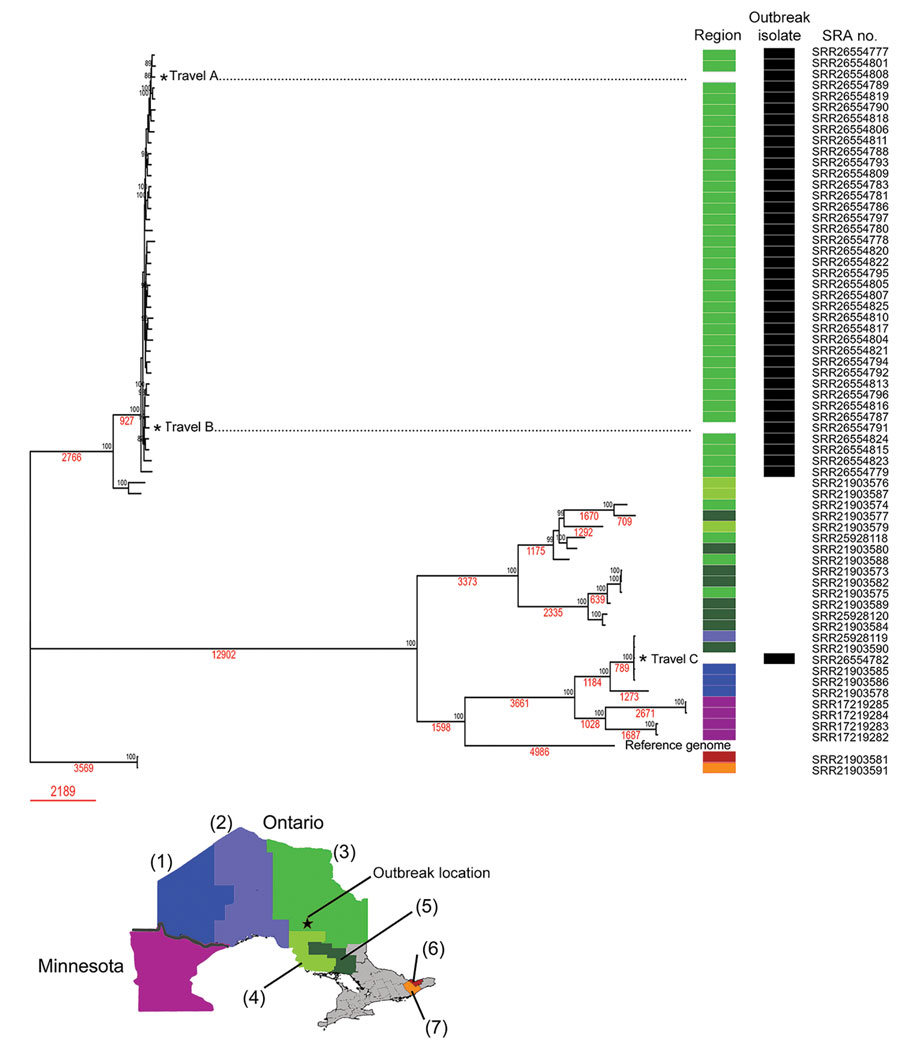Volume 30, Number 7—July 2024
Research Letter
Genomic Epidemiology of Large Blastomycosis Outbreak, Ontario, Canada, 2021
Figure

Figure. Phylogenomic analysis of whole-genome single-nucleotide variants by neighbor-joining method of Blastomyces gilchristii isolates from a large blastomycosis outbreak, Ontario, Canada, 2021. Percentage of trees of 500 bootstrap replications in which the associated taxa clustered together is shown next to the nodes. The tree is drawn to scale, with branch lengths measured in number of substitutions per site (red text). There were 45,321 positions in the final dataset. Outbreak isolates are designated with black bars. Colors indicate geographic region in which the patient resided is as shown on map, including cases from Minnesota, USA; numbers indicate regions: (1) Northwest, (2) Thunder Bay District, (3) Porcupine, (4) Algoma, (5) Sudbury, (6) Ottawa, (7) Leeds/Grenville/Lanark. The geographic regions of residence for the travel cases were not available. SRA, National Center for Biotechnology Information Sequence Read Archive.